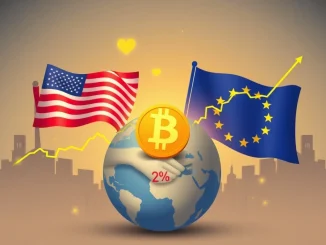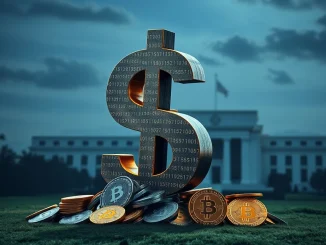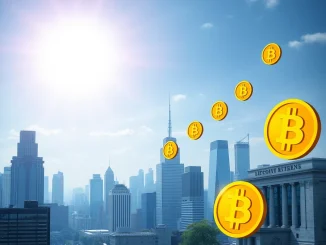
Global economic signals, especially those from the Federal Reserve, are closely watched by investors across all markets, including cryptocurrency. Why? Because decisions around monetary policy, particularly the timing of interest rate cuts, can significantly impact liquidity and risk appetite.
What Did Austan Goolsbee Say About Tariffs and Interest Rates?
According to reports, Chicago Fed President Austan Goolsbee recently shared a perspective that adds a layer of complexity to the current economic picture. He indicated that recent threats regarding tariffs could potentially push back the timeline for anticipated Fed rate cuts.
This statement highlights a key consideration for policymakers: how external factors, like trade policy, interact with domestic monetary goals. The Federal Reserve’s dual mandate is to maintain maximum employment and stable prices. While recent inflation data has shown some progress, the path forward isn’t without hurdles.
How Do Tariffs Impact the Economic Outlook?
Understanding the connection between tariffs and interest rates requires looking at the potential economic fallout from increased trade barriers. Here’s a breakdown:
- Increased Costs: Tariffs are essentially taxes on imported goods. These costs can be passed on to businesses and consumers, leading to higher prices.
- Inflationary Pressure: If tariffs lead to widespread price increases across various sectors, they can contribute to overall inflation.
- Supply Chain Disruption: Tariffs can force companies to find new suppliers or alter production strategies, potentially leading to inefficiencies and higher costs.
- Uncertainty: The threat or implementation of tariffs creates uncertainty for businesses planning investments and pricing strategies.
If tariffs contribute to inflation or create economic instability, the Fed might feel less confident about cutting rates. Their priority is price stability, and if new tariffs threaten to reignite inflationary pressures, they may choose to keep rates higher for longer than previously expected.
Why Do Delays in Interest Rate Cuts Matter for Crypto?
The potential delay in interest rate cuts has implications for broader financial markets, including cryptocurrencies. Generally speaking:
- Higher interest rates increase the cost of borrowing for businesses and individuals.
- They can make traditional savings and fixed-income investments more attractive relative to riskier assets.
- Reduced liquidity in the financial system can temper enthusiasm for speculative investments like crypto.
Conversely, the prospect of lower rates often fuels rallies in risk assets as borrowing becomes cheaper and investors seek higher returns outside of traditional low-yield options. Therefore, any factor that delays rate cuts can be seen as a headwind for markets that thrive on liquidity and risk appetite.
Navigating the Economic Outlook Amidst Tariff Talk
Goolsbee’s comments underscore the complexity of the current economic outlook. Policymakers are balancing incoming economic data, global events, and potential future shocks like significant shifts in trade policy. Investors should remain attentive to Fed communications and developments on the trade front, as these factors are intertwined and can influence the timing of monetary policy adjustments.
Summary: Tariffs, Rates, and Uncertainty
In conclusion, Chicago Fed President Austan Goolsbee has raised a significant point: the threat of new tariffs could potentially delay the much-anticipated interest rate cuts. This connection stems from the potential for tariffs to fuel inflation and create economic uncertainty, factors that could cause the Federal Reserve to maintain a more cautious stance on lowering borrowing costs. For the crypto market and other risk assets, this highlights the continued importance of macroeconomic factors and the need to monitor not just inflation data, but also developments in areas like trade policy that can influence the Fed’s path forward.



